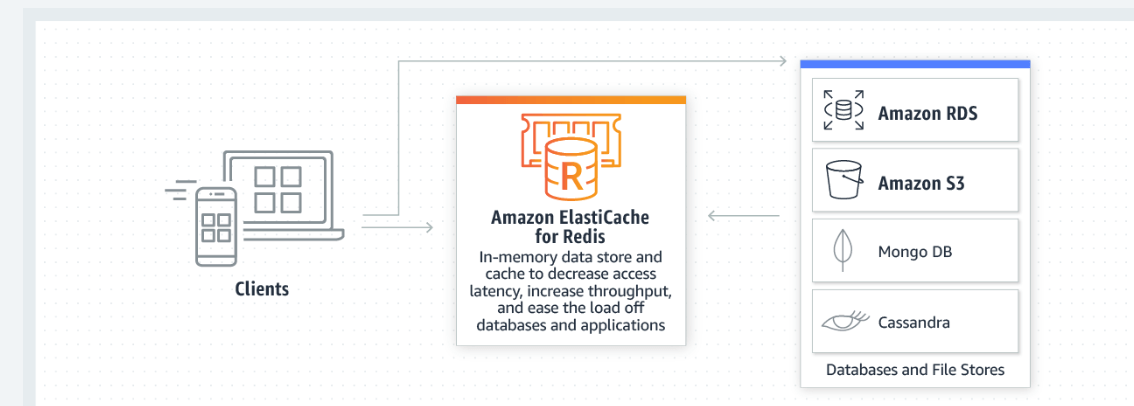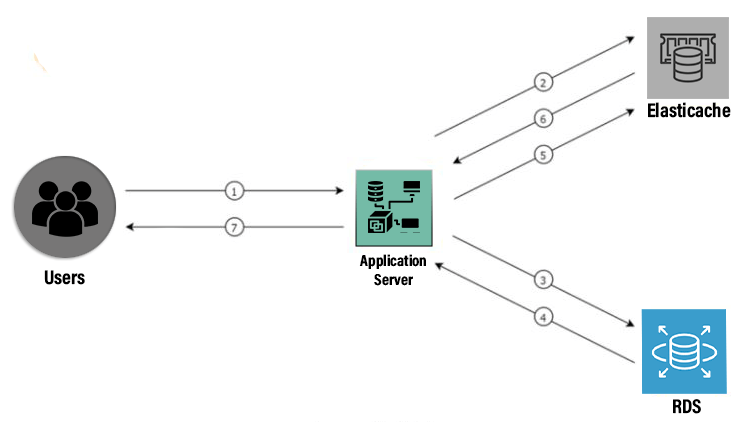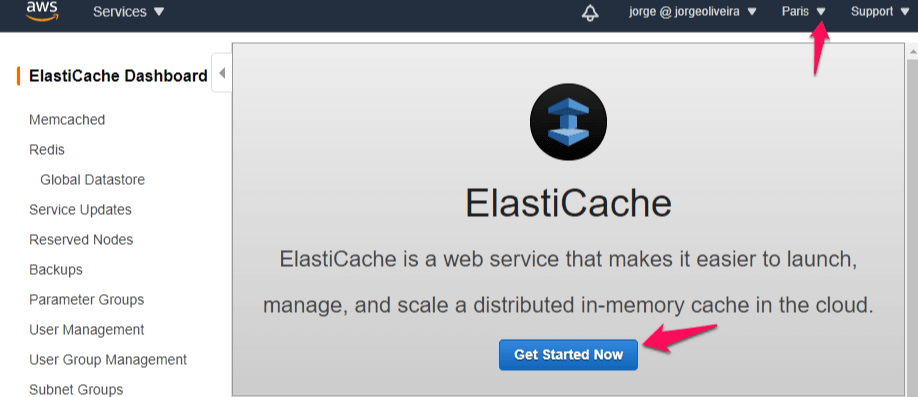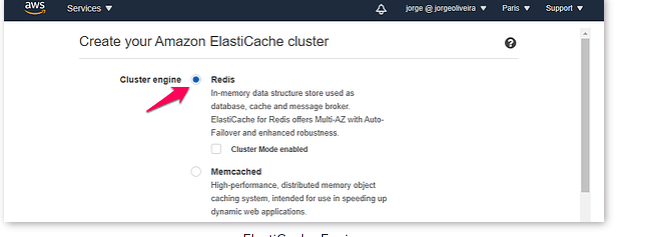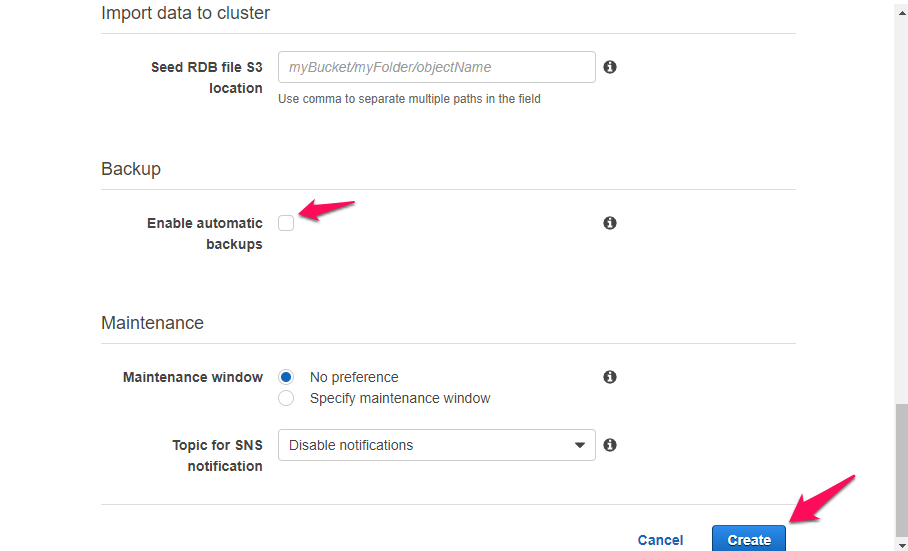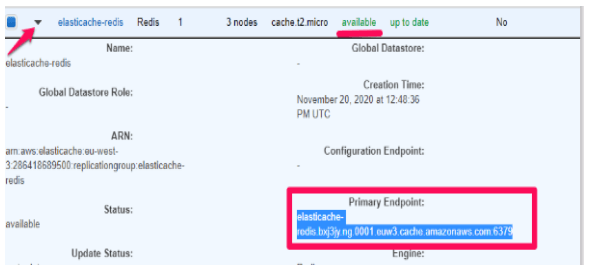Updated March 16, 2023
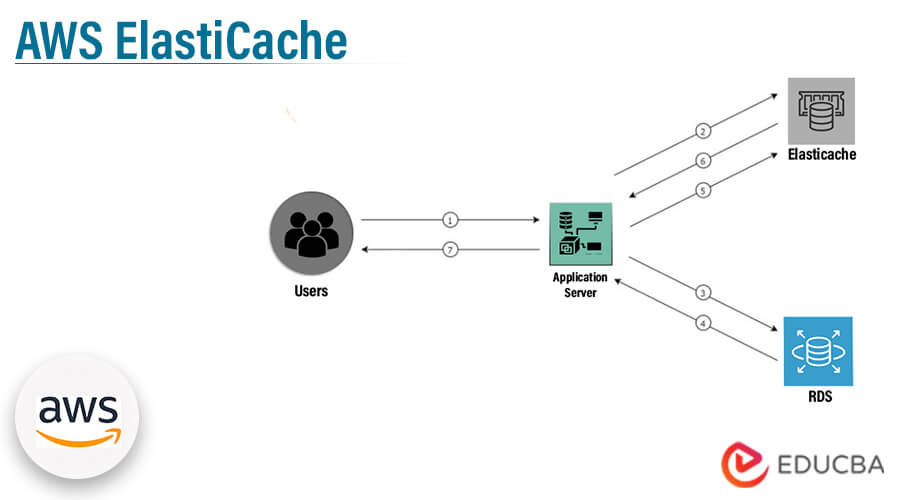
Introduction to AWS ElastiCache
The following article provides an outline for AWS ElastiCache. Amazon provides this feature to improve the performance of web-based applications. It is primarily used to store and retrieve data from database memory caches that communicate with individual cloud server nodes via data discs. It also operates in fast mode for internal data memory, and the application system manages user inputs and outputs using the AWS console.
Key Takeaways
- Cache-as-a-Service called Amazon ElastiCache was created and made available by Amazon Web Services (AWS).
- A distributed in-memory cache environment in the cloud may be deployed, maintained, and scaled using this completely managed system.
- To improve web-based application performance by lowering database load through rapid data retrieval from in-memory data stores with high throughput and low latency.
- It’s a high-performance caching system that supports resource-intensive web applications that demand a rapid response.
- For the purpose of supporting demanding applications, it has a sub-millisecond latency capability.
What is AWS ElastiCache?
The Cache-as-a-Service called Amazon ElastiCache was created and made available by Amazon Web Services (AWS). A distributed in-memory cache environment in the cloud area may be deployed, maintained and scaled using this completely managed system. According to Amazon, it is a service that makes it simple to set up, manage, and grow in-memory data storage that is compatible with open-source software in the cloud. This essentially means that it eliminates the hassle of configuring and maintaining a distributed cache system. The Amazon elastic cache’s performance will reduce the application database load of high-throughput, low-latency data memory. Also included is a high-performance caching system that makes it easier for web applications to request and follow up on the request and response system.
Use Cases Redis AWS ElastiCache
Redis and Memcached are compatible and type of AWS ElastiCache. Boost the performance of applications and access the data with no delays and high throughput. Facilitate backend database loading by caching the data, and application scalability on the backend database.
We construct the clients for storing the datas with no further delays. Outstanding and In-memory data stores manage data in-memory, which is an order of magnitude faster than discs, in contrast to disk-based databases where most operations require a roundtrip to disc. As a result, read and write operations often take less than a millisecond, and a cluster can accommodate hundreds of millions of operations per second. For lightning-fast speed, ElastiCache offers you an end-to-end hardware and software stack that has been optimized.
Now we can manage groups more effectively for a while and still maintain the security boundaries in the design thanks to granular access control. We can restrict the cluster to the IP ranges for selecting the nodes by using Amazon ElastiCache for Redis, which supports the Amazon VPC. To keep the Redis environment secure for ElastiCache team and continually scans for known security flaws in open-source Redis, operating systems, and firmware. It supports encryption in transit and at rest, using HIPAA compliant audit has FedRAMP authorization, and is PCI compliant (including customer managed CMK stored in AWS KMS).
How to Use AWS ElastiCache for Redis?
Install an EC2 instance in the AWS environment. Then the instance will be used to execute a sample Redis cluster-using web application. The “Public IPv4 DNS” URL can be copied from the information page to run the EC2 instance and will be subsequently used.
When storing and managing the session data of users is required, scalable web applications frequently use Redis as a session store.
How to Create AWS ElastiCache for Redis?
We can follow the below steps:
1. On the top right corner of the ElastiCache Dashboard of the AWS Console, we can select AWS Redis cache cluster deployment will take place in the AWS Region. Make use of the same region as the EC2 instance.
2. Start by choosing “Redis” as the ElastiCache engine when constructing a new cluster.
3. AWS Redis Cluster Mode can be turned off if we have not used.
4. The cluster has a distinctive name and uses the cluster’s default Amazon Cloud location.
5. ElastiCache offers a selection of cache instance types, each of which caters to various performance and storage requirements. We can choose the “cache.t2.micro” type for this illustration, which is suitable for the free tier and sufficient.
6. Create a new subnet group in Advanced settings by giving it a distinctive name.
7. The automated backup feature is checked by default, we can choose not to use it in this case and uncheck the box.
8. Click the “Create” button after we have reviewed all the settings.
9. When the Redis Cluster is ready, click the arrow to reveal its setup details, then copy the “Primary Endpoint” URL so that the web application can use it later.
Difference between AWS ElastiCache vs Redis Enterprise
Given below are the differences mentioned:
| AWS ElastiCache | Redis Enterprise |
| Its in-memory data store and provides the cache service. | The creators of open source Redis created the powerful in-memory NoSQL database platform. |
| The AWS managed services provided in-memory caches and disk-based databases. | The several enterprise-level features, it keeps Redis’s simplicity and fast performance. |
| Memcached and Redis deployments may be set up, run, and scaled easily with the help of Amazon ElastiCache. | It offers many layers of support, and integrations like K8s, and simplifies operations, scaling, and multi-tenancy. |
| Amazon hosted services, are expensive, and have some other added advantages. | In-memory, open-source, BSD-licensed Remote Dictionary Server is a key-value data store. |
| AWS elastic cache is the caching option. | To work with Redis clients and Redis APIs without any issues. |
FAQ
Given below are the FAQs mentioned:
Q1. What is AWS Elastic-cache?
Answer:
Cache-as-a-Service called Amazon ElastiCache was created and made available by Amazon Web Services (AWS). A distributed in-memory cache environment in the cloud may be deployed, maintained, and scaled using this completely managed system.
Q2. How does AWS Elastic-cache work?
Answer:
To serve the most demanding applications needing sub-millisecond response times, it functions as an in-memory data storage and cache.
Q3. Mention the types of AWS Elastic-cache?
Answer:
- Memcached
- Redis
Conclusion
The cloud native apps can benefit greatly from the use of a caching solution, which can greatly enhance overall speed while lowering expenses associated with data access latency and general inefficiencies. Cloud Sizes like file services, databases, DevOps, or any other enterprise workload, ONTAP offers enterprise-grade storage management services on AWS, Azure, and Google Cloud.
Recommended Articles
This is a guide to AWS ElastiCache. Here we discuss the introduction, and how to use and create AWS ElastiCache for redis? and differences. You may also have a look at the following articles to learn more –
